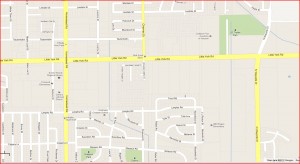I’ve been banging the drum lately about encouraging growth inside the city’s boundaries as a long-term financial management strategy, so I’m glad to see this.
Eight years ago, city of Houston officials decided to incentivize the conversion of 80 wooded acres off Little York Road into a 375-home community, a place, in some small measure, to reverse working class flight to the suburbs and turn vacant land into a cluster of property-tax payers.
The idea was to give the area a little shove and hope that once Leland Woods took off, other developers would chase the success without city help and District B in northeast Houston would sprout new neighborhoods.
To seed the new neighborhood, the city put up $1.5 million in redevelopment money toward the land purchase. It resulted in only 41 homes before credit markets dried up and builders fled. The city got the land back, but it was out nearly $120,000 in fees and taxes to do it.
So, when economic development officials asked City Council last week to approve $100,000 to give it another go, even new District B Councilman Jerry Davis confessed to having some initial reservations.
“I want to make sure that myself, as well as other council members, understand that this is going to be a good investment, not a case of throwing good money after bad,” he said.
Davis said he is confident that a second attempt to grow the neighborhood will succeed because the city has one of the nation’s largest home-builders involved. D.R. Horton plans to build at least 44 more homes and is in talks with the city to continue working toward the original vision of Leland Woods. The city searched for a new builder for two years before selecting D.R. Horton.
The council signed off Jan. 18 on moving the $100,000 from some of the city’s other redevelopment zones to restart Leland Woods. The money is to pay for landscaping, parks, fencing, a monument – and to cover interest payments on the bank note the city holds from a previous developer.
I’ve embedded the TIRZ map in the quote above, but to really appreciate this you have to have a view of the area. Here’s a Google map link, and here’s a closeup look at the development area and its environs:
That’s an awful lot of undeveloped land. There are a number of reasons why unincorporated Harris County has grown more over the past decade than the city, but one prime reason is because there’s a lot more empty space out there that can be easily and inexpensively converted into housing and other development. There’s not nearly as much of that inside city limits, but where it does exist it behooves us to do something with it.
Even successful redevelopment projects take time, officials say. The redevelopment zone in Midtown, for example, is held up as a success story, but it grew slowly in its initial years before ultimately expanding from a tax base of $211 million 18 years ago to $1.3 billion today.
This is exactly what I’m talking about. Midtown was a wasteland when I moved to Houston in 1988. It’s some of the most prime real estate in the city now. Leland Woods may never be that successful, but it sure as heck can be more than it is today. We need it and other places like it to be.


